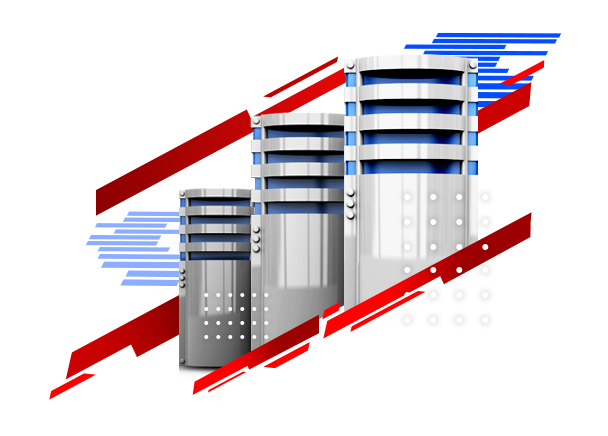
A patient user is legendary! Boredom is the plague of this century, and no one has the patience to struggle with a slow site. Users will search for their desired keyword in Google and they will only have a few seconds to process it, depending on the response time of the site’s server.
In more than 50% of the time, no user will give a site more than three seconds to respond and will leave the site in the blink of an eye! So, you only have a few seconds to keep the customer on your site!
The reduce initial server response time error should be one of the main concerns of a site owner; If your site takes more than three seconds to load, you definitely need to read this article!
In this article, we have reviewed how to fix the reduce initial server response time error with 7 practical solutions, and you will learn why site response time is important. First of all, let’s see what is the definition of site response time.
What is server response time and why is it important?
Table of Contents
Let’s assume that a customer has come to your site to make a purchase. The time he has to wait to enter the site is called server response time.
For example, how long it takes for the site to open or for the customer to access its various pages. Imagine for yourself how critical the site’s response time is for the viability of a business. Who is willing to spend long minutes for the server’s response?! Site response time is not important only if you are unrivaled in your business! Nowadays, it is almost impossible not to have a competitor in the world of internet businesses.
Server response time is measured by TTFB (Time to First Byte) or the time to process the first byte. TTFB is the amount of time a user waits for an HTTP request. If the TTFB duration exceeds a certain limit, you will see the reduce initial server response time error via GTMetrics.
A good ranking of a site in the search results is a guarantee of the success of a business online! Businesses use every SEO trick they know how to rank higher in search engines. Server response time is one of the main factors for ranking. The better the TTFB, the better you will rank in Google!
Now you understand why server response time is so important? Let’s take a look at the best server response time.
What is the best server response time?
Knowing the answer to this question will save your business from bankruptcy! Google recommends that you aim for an approximate time of less than 200 milliseconds; While a time of 100 milliseconds is ideal. On the other hand, Google has divided websites into three different categories based on response speed:
- Fast: 90 to 10
- Normal: 50 to 89
- Slow: 0 to 49
According to Google statistics, the speed of half of the sites is slow and 40% have normal speed. Only a small part (10%) of sites are considered fast; It can be said that there is still room for improvement!
If you agree, let’s go to the solutions to reduce this time.
7 practical solutions to fix the reduce initial server response time error
By using these 7 methods, your server’s response time will improve.
1- Use reliable and fast hosting
Fast loading and easy access to the site is the first expectation of every user. If the extra traffic is causing your server response time to increase, you need to think about it!
Choosing a reliable and fast host will meet the needs of your customers. The use of free hosting or shared hosting reduces the site’s response speed. So if you are experiencing the Reduce Initial Server Response Time error due to the host, change it as soon as possible.
2- Use a CDN
The use of CDN or content delivery network has brought geographical boundaries together! What does CDN have to do with increasing site response speed?
Without using a CDN, users receive your site’s content from a single server; That is, a person who lives in America or a person who lives in a Canadian city, both receive the content from the same server, regardless of the distance! By the way, the distance has a negative effect on the response time of the server.
CDN helps the content of your site reach the audience from the nearest server; With the help of this distance reduction, you can reduce the response time of the server.
3- Optimize the database
Optimizing the database is one of the solutions to fix the reduce initial server response time error. We recommend reading the article on increasing site speed by optimizing the database.
Over time, the database, which has collected a lot of information, leads to a decrease in the loading speed of the site. There are ways to optimize the database or databases and increase the response speed of the server. Using WordPress plugins, SQL queries and hosting control panels helps to optimize the database.
4- Use WordPress style templates
Choosing among thousands of WordPress themes is not an easy task! You might be tempted to choose a flashy template without considering your needs. This is exactly where you should wait for the reduce initial server response time error fix warning for your site.
Admittedly, the variety of formats is high and everyone gets involved; But you should not neglect the speed of your site! If you are using a WordPress theme, choose a simple theme and avoid adding too many plugins. Use a monitoring tool to check your site’s plugins and remove them if you don’t need them.
If you do not have a special monitoring program in mind, we recommend Atop.
5- Use the most up-to-date version of PHP
The ability of a server to provide services to users has a reverse relationship with its speed! That is, we expect to experience a lower speed when working with the server as the processes of a site become more complicated and its services increase.
Anyway, don’t forget to upgrade your hosting to new PHP versions. If you use cPanel or Directadmin control panels, we have already taught you in an article how to change the PHP version in these two control panels.
In short, be careful to use the most up-to-date version of PHP to reduce server response time.
6- Use cache plugins
Using WordPress cache plugins reduces TTFB and increases server response speed to users by using storage. For example, there are WordPress plugins that store files on the user’s system. This feature allows the user to acess this stored information faster when using the same site again. This operation is called Cache!
7- Use GZIP
Using GZIP compression helps to reduce file size and transfer data faster.
People use zip or rar to compress files on their system. Gzip does the same, but in a different place! JavaScript, CSS and HTML files uploaded to the site are compressed by GZIP. With this method, a large amount of data is available, but it does not negatively affect the speed of the site.
Using these 7 solutions can have a significant impact on the speed of your site.
Conclusion
One of the most important criteria for measuring the performance of an hour is the response speed of the server! The faster you act, the more satisfied visitors you will have. The more satisfied visitors are, the more likely they are to become customers; Therefore, improving the response speed of the server directly and indirectly affects the profitability of your business.
In this article, we reviewed 7 ways to reduce server response time. We hope it was useful for you. In addition, if you also know a solution that is missed in this article, be sure to inform us and other readers in the comments section.
CATEGORY:Blog











